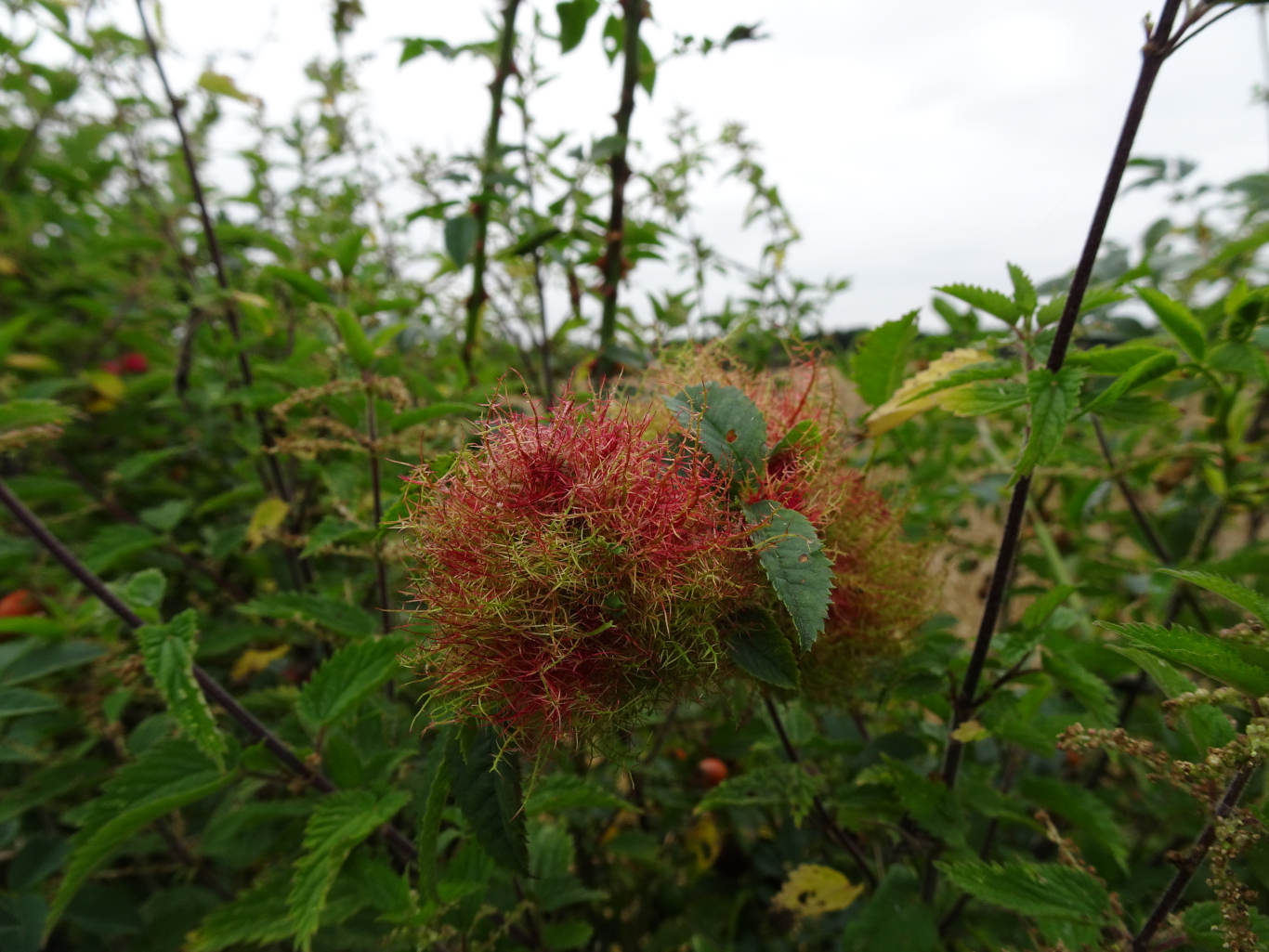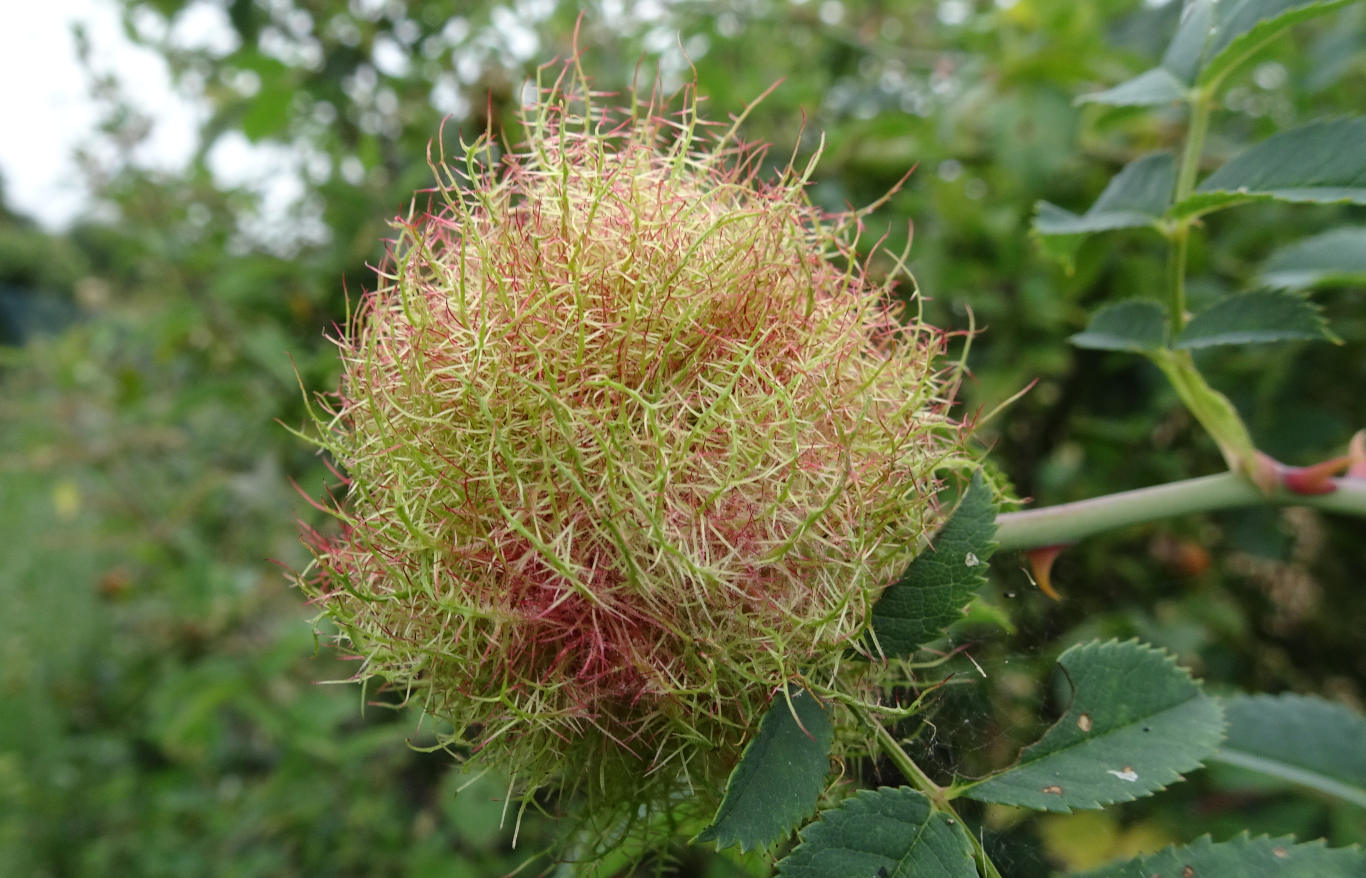Whilst out on a summer stroll you may be lucky enough to happen upon one of these striking flower-like growths…

Rare Sight
These exotic looking florets grow on wild roses and are actually abnormal growths (know more generally as galls) caused by the larvae of the rose gall wasp (Diplolepis rosae). The wasp itself is considerably less noticeable than the gall being only 3 to 5mm in length and rarely seen.
Interestingly, if you are lucky enough to see a gall wasp it is highly likely to be a female. Males are very rare, the females can reproduce entirely on their own without need of a male. This is known as parthenogenesis and is described in great technical detail on Wikipedia.

Parasitic Palace
The female lays her eggs in the leaf buds of wild roses in the spring using her ovipositor (again, for more detail see Wikipedia) which is a long tube used for laying eggs. When fully extended the ovipositor doubles the length of the wasp.
The eggs hatch after a few days and and trigger the formation of the spectacular gall that encapsulates all of the newly hatched grubs. The gall protects the grubs from predators and provides them with a constantly growing food source throughout the summer. It is not fully understood how the larvae stimulate these large ornate growths but they are largely harmless to the rose.
A Short Life on the Wing
The grubs mature throughout the summer and autumn before pupating within the gall where they overwinter safely protected from predators and the elements. The following spring the adults bore their way out of the gall and take to the wing. Their life on the wing is brief, lasting only a few days during which time they lay their eggs to start the cycle all over again.

Folklore
The name Robin in Robin’s Pincushion refers to Robin Goodfellow, otherwise know as Puck, a folklore woodland sprite who has featured in popular culture through the ages. Perhaps most familiar from Shakespeare’s “A Midsummer Night’s Dream” he has also featured in Rudyard Kipling’s “Puck of Pook’s Hill” and is seen depicted today in modern literature, television and even video games.
His pincushion is the subject of many folklore remedies, all highly unlikely and not recommended.
In days gone by, it was thought that hanging them around your neck would treat whooping cough. Other unlikely remedies include carrying them in your pocket to relieve aches and pains and placing them under your pillow to aid sleep.
In reality they’re best left where they are and admired for their beauty and as another example of the fragile diversity of life we enjoy arounds us.


